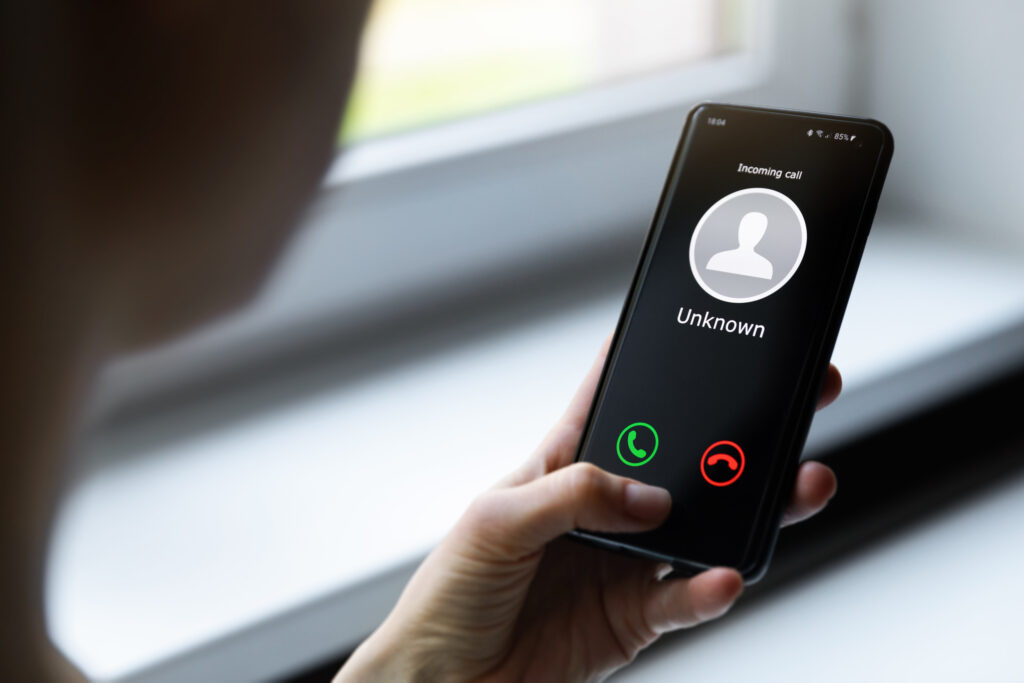Vishing, short for voice phishing, is a type of cyber attack that involves using voice communication to trick individuals into revealing sensitive information or performing certain actions. Vishing attacks typically occur over the phone, but they can also happen through voicemail, voice messages, or even Voice over IP (VoIP) services. The aim is to manipulate victims into disclosing personal information, such as credit card numbers, social security numbers, or login credentials. Additionally, attackers may also try to get them to transfer money or take other malicious actions.
How Vishing Works?
Vishing attacks can take several forms, each targeting different vulnerabilities in human behaviour:
- Caller Impersonation: Attackers impersonate legitimate entities, such as banks, government agencies, or tech support teams. They use information gathered from open sources (like social media) or data breaches to appear convincing and gain trust.
- Urgency and Fear: Attackers create scenarios that incite fear or urgency, pressuring victims to act quickly without questioning. For instance, they might claim there’s a security breach on an account and immediate action is needed to prevent damage.
- Authority Exploitation: Attackers might pose as high-ranking individuals within an organisation. Then, they use their perceived authority to request sensitive information or financial transactions from lower-level employees.
- Baiting: Attackers lure victims with offers of prizes, discounts, or rewards, asking for personal information or payment in return.
Some Examples of Vishing Attacks
1. Bank Account Compromise
In this scenario, an attacker gathers information about a target through social media profiles and data breaches. Armed with this data, the attacker poses as a representative from the victim’s bank and calls the victim. The attacker claims that there has been suspicious activity on the victim’s account and requests verification of account details to “secure” the account.
To add credibility, the attacker might mention some accurate personal information, such as the victim’s name, address, and recent transactions obtained from previous breaches. The victim, feeling alarmed and wanting to protect their account, might provide the requested information. With these details, the attacker gains access to the victim’s bank account, potentially steal money or uses the information for further identity theft.
2. CEO Fraud
In a CEO fraud attack, the attacker poses as a high-level executive within an organisation, typically the CEO or CFO. The attacker contacts a lower-level employee, often someone in the finance department, and claims to have an urgent and confidential financial matter that requires immediate attention. The attacker instructs the employee to transfer a substantial amount of money to a specific account.
The urgency and the perceived authority of the request often result in the employee bypassing usual protocols and performing the unauthorised transfer. By the time the organisation realises the fraudulent transaction, the money is already gone, and the attacker disappears.
3. Tech Support Scam
In this vishing attack, the attacker impersonates a tech support agent from a well-known company, often claiming to be from Microsoft or a popular antivirus software provider. The attacker makes unsolicited calls to individuals, informing them that their computer is infected with a virus or malware that needs immediate attention.
The victim is guided through a series of steps that lead to granting the attacker remote access to the computer. The attacker might show fabricated evidence of infections and convince the victim to pay for a fake “fix” or subscribe to a bogus support plan. In reality, the attacker may install malicious software or steal sensitive information from the victim’s computer.
How to Protect Yourself from Vishing Scams
The most vulnerable individuals to vishing attacks are often those who lack awareness, may be easily persuaded, or frequently interact with phone-based communication for personal or professional reasons.
Employees in corporate environments, for instance, especially those responsible for financial transactions, are at risk due to their potential access to sensitive company information and the psychological manipulation tactics employed by attackers. Vishing attackers capitalise on these vulnerabilities by exploiting trust, authority, and urgency, making it imperative for everyone to stay informed and cautious when engaging in voice-based communications.

Protecting yourself against vishing attacks requires a combination of awareness, vigilance, and adopting security measures. Here’s a comprehensive guide on how to safeguard yourself from falling victim to vishing attacks:
- Be Sceptical and Verify Caller Identity: Approach unsolicited calls with scepticism. Be cautious when the caller requests sensitive information or demands immediate action. Always verify the identity of the caller, especially if they’re requesting sensitive information or actions. Use official contact information from trusted sources to contact the organisation or person back.
- Don’t Share Personal Information: Avoid sharing sensitive information such as Social Security numbers, credit card details, passwords, or bank account information over the phone.
- Educate Yourself and Stay Informed: Regularly educate yourself about common vishing tactics and the latest scams. Staying informed empowers you to recognise and respond to potential threats effectively.
- Implement Two-Factor Authentication (2FA): Enable 2FA on your online accounts whenever possible. It provides an extra layer of security even if your login credentials are compromised.
- Use Call Filtering and Screening: Utilise call filtering and screening features on your phone to block or screen out potential scam calls. Many smartphones have built-in options for this purpose.
- Establish a Personal Verification System: Create a personal verification system with trusted contacts, where you can share a code or passphrase to verify your identity in case of a suspicious call.
- Report Suspicious Calls: Report any vishing attempts to the appropriate authorities or organisations. Reporting can help prevent others from falling victim to the same scams and may lead to legal actions against the attackers.
Vishing Attacks Targeting Employees in Corporations
Employees in corporate environments are indeed a prime target for vishing attacks due to the potential access they have to sensitive company information and financial resources. Here’s a more detailed look at why they are vulnerable and what organisations can do to protect their employees:
- Access to Sensitive Information: Corporate employees often have access to valuable company data, including customer information, financial records, intellectual property, and trade secrets. Attackers are aware of this and seek to exploit it. By impersonating a co-worker, boss, or even a trusted vendor, vishers aim to extract this confidential data.
- Trust in Internal Communications: Within an organisation, employees generally trust internal communication channels. When a call appears to come from within the company or from a recognised authority figure, employees are more likely to let their guard down and provide requested information.
- Urgent Financial Transactions: In corporate settings, vishing attacks may involve persuading employees to initiate financial transfers or payments. Attackers often impersonate high-ranking executives, like the CEO or CFO, to create a sense of urgency. They use this ruse to request urgent wire transfers or payments, taking advantage of the chain of command within organizations.
- Exploiting Employee Hierarchy: Attackers may also use the organisational hierarchy to their advantage. For example, they might call lower-level employees, pretending to be supervisors or managers, and instruct them to perform certain actions. Employees may be hesitant to question such directives, fearing repercussions or undermining their superiors.
- Human Error and Psychological Manipulation: Vishing attacks often rely on psychological manipulation and social engineering tactics. Attackers may use fear, urgency, or flattery to persuade employees to divulge information or take actions they wouldn’t normally consider. This plays on the natural inclination to trust and obey authority figures.
Ways to Protect Employees Against Vishing in Corporate Environments
- Education and Training: Regularly educate employees about the various forms of vishing attacks and how to recognise them. Training sessions can include simulated vishing calls to help employees practice identifying and responding to these threats.
- Implement Strong Authentication: Enforce strict authentication procedures for financial transactions and access to sensitive systems. This may involve multi-factor authentication (MFA) and clearly defined protocols for verifying requests for financial transfers.
- Establish Clear Communication Protocols: Develop and communicate clear policies regarding how sensitive information is requested and shared within the organisation. Encourage employees to verify any unusual or sensitive requests through independent channels.
- Encourage a Culture of Vigilance: Foster an environment where employees feel comfortable reporting suspicious calls or emails. Establish clear reporting mechanisms and ensure employees know how to use them.
- Implement Call Authentication Solutions: Deploy technologies like call authentication and verification systems. These can help employees identify legitimate callers from potential vishers.
- Regularly Update Security Policies: Keep security policies and procedures up-to-date to adapt to evolving vishing tactics and technologies.
- Monitor and Analyse Calls: Implement call monitoring and analysis tools to detect unusual call patterns or anomalies that might indicate vishing attempts.
- Audit Financial Transactions: Conduct periodic audits of financial transactions to ensure that they align with established protocols and policies.

Security Awareness
Security awareness is the cornerstone of safeguarding ourselves against cyber threats, such as vishing attacks. Interestingly, a significant portion of these threats stem from human error or lack of awareness. This is highlighting the crucial role that education plays in our digital lives. In fact, studies reveal that around 95% of cyber security breaches occur due to human error, underscoring the need for increased vigilance.
That’s where Cyber Security Awareness Training come in, and we, at Labyrinth Cyber, have you covered. Our training programs are not just about the ‘do’s and don’ts’ of cyber security. They’re an exciting journey into the heart of the cyber realm, equipping you with the skills and savvy needed to navigate it safely. So, let’s be vigilant, stay informed, and arm ourselves with knowledge – because awareness and knowledge truly is one of our best defence! Contact us today.



